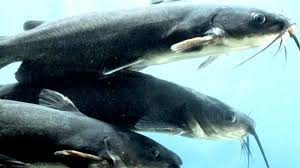We have created a detailed catfish farming business plan in Nigeria to start with your new catfish farming venture to get a financial loan from CBN, NIRSAL, BOI, other investors and future predictions.
How to Rear Catfish in Bucket
In Nigeria, where access to freshwater resources can be limited, small-scale aquaculture practices have gained popularity as an alternative means of providing a sustainable source of protein. Rearing catfish in buckets is a cost-effective and space-efficient way for individuals and households to engage in aquaculture. This article provides a step-by-step guide on how to successfully rear catfish in a bucket, outlining the necessary materials and procedures.
Materials Needed
- Bucket: Select a sturdy, food-grade plastic bucket with a lid. Ensure it is large enough to accommodate the number of catfish you plan to rear.
- Water Source: Access to clean, oxygenated water is vital. While tap water can be used, ensure it is free from harmful chemicals. Alternatively, well water can be a suitable option.
- Aerator: This device adds oxygen to the water, which is crucial for the survival of the fish in a confined space like a bucket.
- Substrate: Gravel or small stones serve as a substrate at the bottom of the bucket, mimicking the natural environment of the catfish.
- Catfish Fingerlings: Source healthy, disease-free catfish fingerlings from reputable hatcheries.
- Feeds: Utilize appropriate catfish feed. Catfish are omnivores, so a combination of high-quality pellet feed and supplementary feed like earthworms or aquatic plants can be used.
- Light Source: If your bucket system is indoors or lacks natural light, consider a small light to simulate day and night cycles.
Steps to Rear Catfish in a Bucket
- Prepare the Bucket:
- Thoroughly clean the bucket, ensuring it is free from any contaminants. Rinse it with clean water.
- Add Substrate:
- Place a layer of gravel or small stones at the bottom of the bucket. This provides a substrate for beneficial bacteria and a more natural environment for the catfish.
- Fill with Water:
- Fill the bucket with clean water, leaving some space at the top for the fish to swim near the surface.
- Add Aerator:
- Install the aerator as per the manufacturer’s instructions. This device is crucial for maintaining optimal oxygen levels.
- Introduce Catfish Fingerlings:
- Gently introduce the catfish fingerlings into the bucket. Ensure they have ample space to swim comfortably.
- Feeding:
- Start feeding the catfish according to recommended guidelines. Be cautious not to overfeed, as this can lead to water pollution.
- Water Quality Management:
- Regularly monitor water quality. Perform partial water changes if the water becomes murky or contains high levels of ammonia or nitrites.
- Lighting and Temperature:
- Position the bucket in a location where it receives some natural light. Maintain an appropriate water temperature for the specific catfish species.
- Regular Maintenance:
- Clean the bucket periodically to remove waste or uneaten food. Monitor the health of the fish and take action if any signs of illness are observed.
- Harvesting:
- Once the catfish reach the desired size, use a net to carefully catch and transfer them to a holding container with clean water.
Rearing catfish in buckets provides a practical solution for individuals in Nigeria seeking to engage in small-scale aquaculture. By following these steps and maintaining proper care, you can successfully raise catfish in a limited space. As the fish grow, consider transitioning to a larger, more suitable environment for their continued well-being. Additionally, consult local regulations and guidelines for aquaculture in Nigeria to ensure compliance with relevant laws. Happy fish farming!
WHAT MAKES UP A GOOD CATFISH FARMING BUSINESS PLAN IN NIGERIA?
- Introduction
Executive summary
Business ownership
Farm location
Our vision statement
Our mission statement
Our business structure
Our strength
Weakness:
Market analysis
Market trends
Our target market
Our competitive advantage
Sales and marketing strategy
Sales forecast
Payment options
Financial analysis of the catfish farming business
Sources of startup capital
If you’ve been looking for where you’ll get a business plan for your catfish farming business, all you need is provided below:
FEASIBILITY AND BUSINESS PLAN SAMPLE FOR CATFISH REARING
1.0. EXECUTIVE SUMMARY
Adeleke Nig. Ltd is an agricultural venture that specializes in the production of table-sized catfishes which makes provision for a high market. Manure is also a byproduct that we produce. This company is in Kano, Kano State. The owner of the company started this farm to get bridge thw gap that exists between the demand and supply of table-sized catfish in Kano on a daily basis.
We aren’t only focused on meeting the customers’ demands; our plan is also to make sure our customers are satisfied. The creation of this company is also a way of eradicating unemployment in the area it is located and to be a plus to the country’s economy. We plan on providing quality products and efficiently maintain this supply. With this business, we plan to distribute catfish to hotels, restaurants, schools, catering and bakery businesses, clubs, home delivery food centres, and supermarkets. Our plan is to do this at affordable prices.
We do not only provide products, but also services. We aim to provide home delivery services to clients who order a particular quantity of products. With this offer, we would like to mostly target our market that makes use of fish, catfish, or eggs in large quantities such as bakeries and schools.
We would make use of about 5,000 fingerlings for the initial operation. The production area is in Kano, a lot of open spaces, water availability, road connection, open space, and swift access to markets.
We’ve wisely taken into consideration the financial, technological, and health risks.

2.0. INDUSTRY OVERVIEW
The Federal Department of fisheries (FDF) stated in a 2007 report that the demand for fishes was 2.1 million tonnes, and domestic production was about 600,000 tonnes.
There was a partial augmentation of this deficit by massive importation of fishes of round 900,000 tonnes with a value of more than $800,000. This is a significant drawback to our scarce foreign exchange.
With this, there’s still a massive deficit of about 600,000 tonnes.
In Nigeria, the annual demand for fish is said to be around 2.66 million tonnes, which is way below the local yearly production of about 780,000 metric tonnes, which will leave the demand-supply gap to be around 1.8 million tonnes. It’s clearly visible that there is a much higher demand compared to supply. As an entrepreneur, what do you think about that? Business opportunity!
The Norwegian ambassador to Nigeria stated that “Nigeria imports fish, especially stockfish from Norway, worth over N109.2 billion Naira ($700million) annually”.
In a report published in May 2012, Dr. Awoteinm George, who is the chairman of the Fisheries Society of Nigeria (FISON) Rivers State Chapter, stated that “Nigeria produces just 40 per cent of the total Fish consumed in the country”. That is to say, 60% of the current demand is yet to be met by catfish farmers.
It is estimated that aquaculture has the potential to produce 2.5 million tons, which if totally harnessed will satisfy Nigeria’s local demand for catfish. The best bet is to grab this opportunity and fill this gap.
Truthfully speaking, agro-based businesses are extremely profitable, and that’s because they meet the basic need of man, which is food.
3.0. OBJECTIVES
At Adeleke Farms, we will measure our success by us being able to achieve the objectives that follow:
- Maintain a gross margin ratio of 50 per cent.
- Become the “Most hygienic and best catfish producer in the region,” complying by the NAFDAC standards.
- Start to make a profit within the initial five months of operation.
4.0. MISSION
- The mission of Adeleke farms is to provide clients with fresh, quality, and valuable products.
- Respecting all workers and make sure the voice of every individual is heard in the company’s affairs.
- Providing investors with opportunities of receiving a good ROI (Return On Investment) and growth of high-quality.
- Contributing to the community via social and physical programs.
5.0. OUR KEYS TO SUCCESS
Adeleke Farms will follow the principles that follow to achieve great success in its market:
- State-of-the-art pond framework, which will accommodate a substantial amount of catfishes with the least risks.
- Diverse slaughters network, optimum inventory level, market chain management, and ‘customer is king’ policy.
- Frequent visits by veterinary medical practitioners and hygienic catfish housing environment.
COMPANY OWNERSHIP
Adeleke Nig. Limited is a private enterprise owned by Dr. Pelumi Adeleke.
How To Download The Complete Catfish Farming Business Plan In Nigeria PDF and Doc
Above is a part of the catfish business plan in Nigerian. If you want the complete catfish farming business plan with 3 years of financial analysis, follow the procedures to download it.
Pay the sum of N8000 (Eight thousand naira only) to the account detail below:
Bank: GTBank
Name: Oyewole Abidemi (I am putting my name and not our company account so you know we are real people and you can trust us)
Ac/No: 0238933625
Type: Saving
P.S: We can also tailor the business plan to your name, business size, capital requirements, and more to fit your direct needs.
Thereafter, send us your email address through text message to +234 701 754 2853. The text must contain the title of the business plan you want and also your email address. Immediately after the confirmation of your payment, we will send the catfisg business plan in Nigeria to your email address where you can easily download it.

2 comments
[…] catfish farming profitable? Yes it is. We created a sample business plan here for entrepreneurs looking to invest in the […]
pls send me the sample business plan